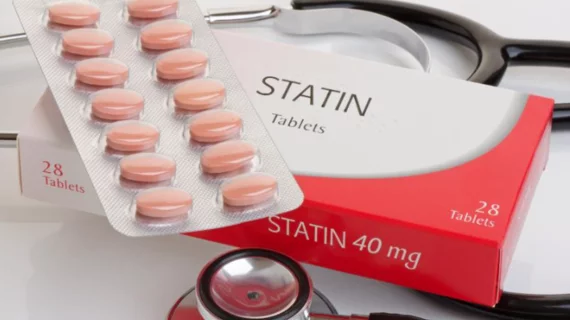Statins found ineffective—and possibly dangerous—in non-CVD patients
In spite of recent research suggesting statins might carry some benefit for non-CVD patients, a review published in the Annals of Internal Medicine this week concluded they have no role outside of heart disease and could, in some cases, even increase patients’ risk for diabetes and myopathy.
“An estimated 38.6 million persons in the United States—around 12 percent of the population—were using statins in 2011 to 2012, and recent guidelines have pushed for wider use,” first author Yazhou He, MD, and colleagues wrote in the journal. “Because of the worldwide increase in statin use in the past several years, interest has grown regarding the potential effect of these drugs on non-CVD outcomes.”
Some meta-analyses have claimed statins are linked to cancer and diabetes outcomes, as well as other non-CVD conditions. But the evidence is scarce, and, according to He and colleagues, it’s not strong enough.
To assess the credibility of recent claims, He et al. reviewed 112 meta-analyses of observational studies and 144 meta-analyses of randomized controlled trials (RCTs), considering 278 unique non-CVD outcomes in the process. They found:
- No convincing (class I) evidence and just two highly suggestive (class II) associations for decreased cancer mortality in cancer patients and decreased exacerbation in patients with chronic obstructive pulmonary disease. The authors also identified 21 class III associations and 42 weak, class IV associations in observational studies.
- Sufficient evidence of decreased all-cause mortality in patients with chronic kidney disease in RCTs—but no evidence that statins improve kidney function.
- Suggestive evidence that statins could increase a person’s risk for diabetes and myopathy.
- No statistically significant evidence in RCTs for myalgia or rhabdomyolysis.
As a result of their findings, He and colleagues said they couldn’t recommend changing current guidelines.
“We report a dearth of convincing evidence that statins had a major role in the 278 unique non-CVD outcomes assessed,” the authors wrote. “Nevertheless, the absence of harmful effects, especially those with highly convincing or highly suggestive evidence, is reassuring. Yet, we cannot exclude the possibility that some of these harms—such as rhabdomyolysis or severe myopathy—may be too rare to rule out with certainty.”

